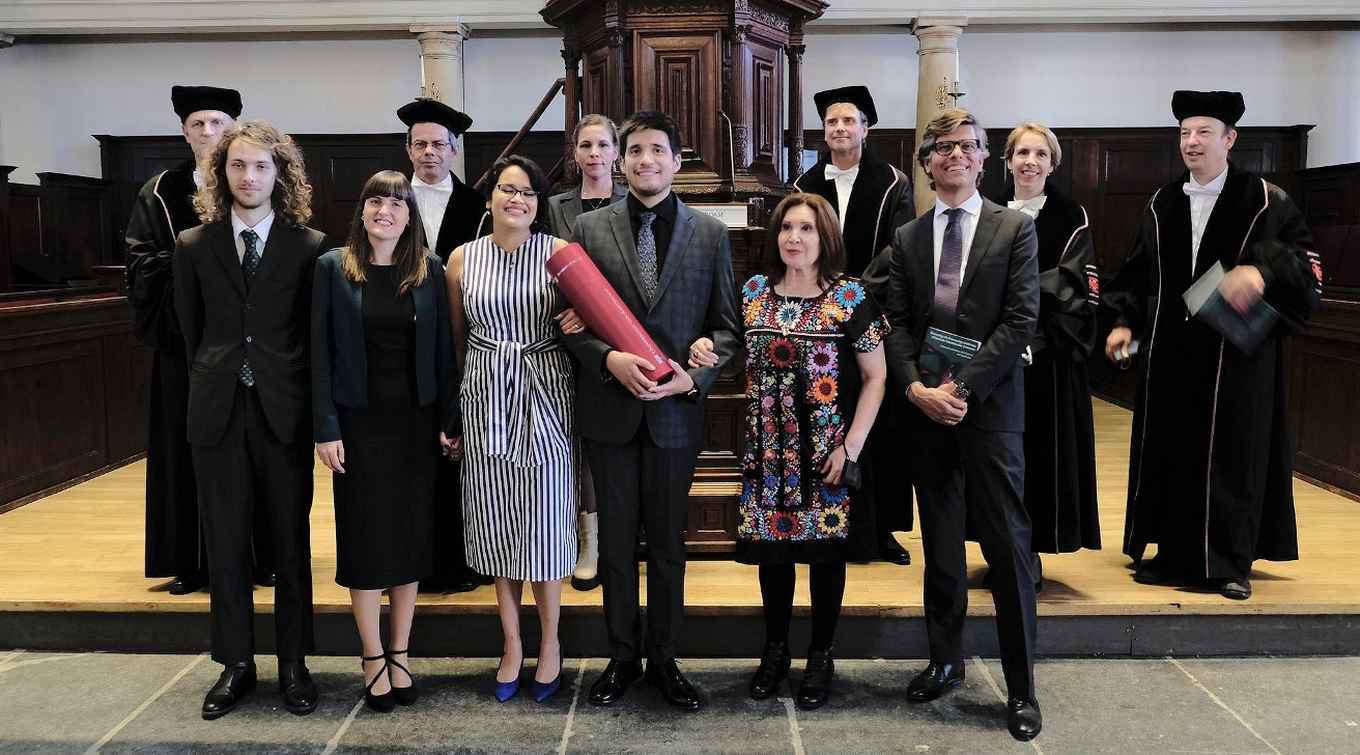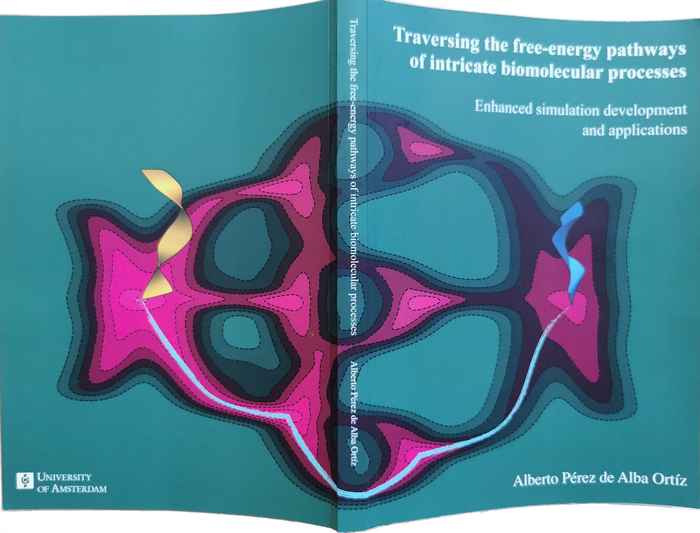Cum Laude for chemistry PhD graduate Alberto Pérez de Alba Ortíz
For development of enhanced simulation techniques to unravel complex molecular transitions
27 September 2021

Although nowadays the vibrations and diffusive motions of molecules can be accurately simulated for hundreds of nanoseconds, this is by far not long enough to observe an activated molecular transition or chemical reaction. In computational chemistry this is quite a conundrum, known as the rare event problem. Working towards a solution, Alberto combined an algorithm to accelerate simulations known as path-metadynamics with a technique called multiple walkers. This advancement makes it possible to discover and simulate the mechanistic pathways of complex transitions and probe the free energy profile along each pathway. Following these method developments, Alberto used his techniques to elucidate the mechanisms of a range of biomolecular processes:
Transitions in DNA, sugar polymers, and proteins
In his PhD thesis, Alberto Pérez de Alba Ortíz describes his studies of various chemical or conformational transitions in biomolecular systems, using enhanced simulations. The first of these systems is hyaluronan, a ubiquitous charged polymer made from sugar monomers. In collaboration with spectroscopists from Amolf, the University of Leeds, and the University of Oklahoma, he showed that Ca2+ ions, in contrast to single valent cations, bind selectively to hyaluronan, thereby affecting the stiffness of the polymer chain.

In collaboration with computational chemist Dr Jocelyne Vreede, Alberto simulated a transition in double-stranded DNA. It is well-known that the two DNA strands consist of four different bases that connect via hydrogen bonds in a pattern known as Watson-Crick-Franklin pairing. The alternative Hoogsteen pairing is much less famous, but is nevertheless abundant in chromosomal DNA and thought to be involved in several biological functions. Alberto showed that the barrier and the reaction free energy for the Watson-Crick-Franklin to Hoogsteen transition depends on the local sequence of the DNA.
A third mystery that Alberto has elucidated is that of the dark-state recovery mechanism of BLUF (Blue Light Using Flavin) photoreceptor proteins. The BLUF protein family are light-sensing proteins, found in bacteria, for example to protect the organism from harmful blue light. These light sensors not only have a remarkably long signalling state (some of these proteins stay ‘on’ for half an hour after ‘seeing’ a blue light photon) but also the large difference of signalling times between different BLUF family members has remained puzzling. Alberto used mixed quantum-chemical / forcefield-based simulations to show the mechanistic steps, the rate-limiting rearrangement, and the cause for the different rates, for the signalling-state to dark-state transition in these BLUF proteins. This was done during a visit to the group of Prof. Carme Rovira at the University of Barcelona, funded by an HPC-Europa3 grant obtained by Alberto.
The dissertation can be found at the UvA repository.
Website Computational Chemistry Research Group.